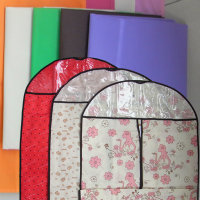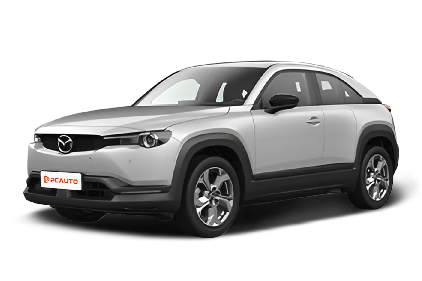Q
Why is the Mazda MX-30 so cheap?
The main reasons why the Mazda MX-30 has a relatively low price in the Malaysian market include its positioning as a compact electric SUV. It has a smaller body size and a moderate driving range, which is suitable for urban commuting rather than long-distance driving. Therefore, cost control is quite strict. The vehicle uses the e-Skyactiv pure-electric technology, but its battery capacity is only 35.5 kWh, with a driving range of about 200 kilometers. Compared with electric vehicles in the same class, it pays more attention to the use of environmentally friendly materials, such as recycled fiber interiors and cork center consoles. Although these designs are unique, they may not significantly improve the vehicle's performance.
In addition, the Malaysian government offers tax incentives for electric vehicles, such as exemptions from import duties and sales taxes, which also reduces the selling price of the MX-30. The Mazda brand is well-known in Malaysia for its handling and design, and the MX-30 continues this style. However, its market positioning is more focused on environmental protection and urban transportation, rather than high-performance or luxury experiences. So, the price is quite affordable.
For Malaysian consumers, if their main use is short-distance travel and they value the concept of environmental protection, the MX-30 is a cost-effective choice. However, if they need a longer driving range or more functions, they may need to consider other models.
Special Disclaimer: This content is published by users and does not represent the views or position of PCauto.
Related Q&A
Q
What is the real life range of the MX-30?
The range of different versions of the MX-30 varies. The initial version of its all-electric model is equipped with a 35.5 kWh lithium-ion battery. It can achieve a range of up to 200 kilometers under the WLTP standard, about 161 kilometers under the EPA standard, and the combined range is only 209 km. Such a range is generally sufficient for daily city commuting. For example, there's no need for frequent charging during short-distance trips like going to work or shopping. However, it's a bit lacking for long-distance travel, and charging points need to be planned in advance.
The range-extended version of the MX-30 launched in 2023 is equipped with Mazda's iconic rotary range extender system, and the range is increased to about 400 kilometers, greatly enhancing its practicality. Even when traveling long distances, it can reduce range anxiety. For instance, it can handle cross-city trips like from Kuala Lumpur to Penang relatively easily.
Q
What type of charger does the Mazda MX-30 use?
As a pure-electric SUV, the Mazda MX-30 in the Malaysian market uses a Type 2 (IEC 62196-2) AC charging port. This is a common standard charging port in Europe and Southeast Asia, which is compatible with most local public charging piles and home wall-mounted chargers. The maximum charging power is 6.6kW, and it takes about 5-6 hours to fully charge the vehicle using a home power supply.
In addition, the MX-30 also supports DC fast charging with the CCS2 standard, with a maximum power of up to 50kW. It can charge the battery from 20% to 80% in 40 minutes, which is suitable for quick energy replenishment during long-distance trips. For Malaysian users, the compatibility of Type 2 and CCS2 means they can conveniently charge their vehicles at mainstream charging networks such as Shell Recharge and ChargeEV.
It should be noted that the charging speed may be affected by local power grid conditions or the power of charging equipment. It is recommended that car owners plan their charging time in advance. The charging standards for electric vehicles vary by region. For example, Japan uses CHAdeMO, while China prefers GB/T. Therefore, it is necessary to pay attention to compatibility when traveling across countries. The charging infrastructure in Malaysia is gradually improving, and it will support more models for efficient energy replenishment in the future.
Q
What is the battery capacity of the Mazda MX-30?
As Mazda's first all-electric vehicle, the MX-30 comes with a battery capacity of 35.5 kWh. Under the WLTP test standard, it has a range of about 200 kilometers. This model is equipped with a lithium-ion battery pack and supports 50 kW fast charging, which can charge the battery to 80% in about 36 minutes. It's well-suited for urban commuting or short trips in Malaysia.
Although its battery capacity is relatively smaller compared to some of its electric vehicle peers in the same class, Mazda has optimized the actual range performance through lightweight body design and precise energy consumption management. Malaysian consumers should be aware that the tropical climate may affect battery efficiency. It's recommended to conduct regular maintenance to keep the battery in good condition.
If you're planning longer trips, you can check out the increasingly comprehensive charging network in Malaysia, including the distribution of charging piles at major shopping malls and highway rest stops. The MX-30's battery technology features a water-cooled temperature control system, which helps maintain battery stability in high-temperature environments. Additionally, Mazda offers an 8-year or 160,000-kilometer battery warranty policy, providing long-term assurance for car owners.
Q
How to charge a Mazda MX-30 at home?
To charge the Mazda MX-30 at home, you first need to make sure you have a suitable charging device. The MX-30 supports the standard Type 2 charging interface, and you can use a household power socket or install a wall-mounted charging box.
If you use an ordinary household socket (240V), the charging speed is relatively slow. It takes about 12-15 hours to fully charge the vehicle. It is recommended to install a dedicated wall-mounted charging box (such as a 7.4kW or 11kW one), which can reduce the charging time to 4-6 hours.
In Malaysia, when purchasing a charging device, you can choose local brands like EV Connection or ChargeSini. They offer charging solutions that meet international standards. At the same time, it is advisable to apply to TNB for a dedicated electric vehicle electricity meter to get a more stable power supply.
In addition, pay attention to environmental safety when charging. Avoid operating in a damp or high-temperature environment, and regularly check if the charging cable and interface are worn. If you plan to use an electric vehicle for a long time, you can also learn about the electric vehicle subsidies and tax-exemption policies provided by the Malaysian government. These measures can further reduce the cost of using the vehicle.
As a compact electric SUV, the Mazda MX-30 has a driving range suitable for urban commuting. The convenience of home charging makes it a good choice for environmentally friendly travel.
Q
Is the Mazda MX-30 hybrid or electric?
The Mazda MX-30 is currently available in two versions in the Malaysian market: the all-electric (EV) and the mild hybrid (MHEV), depending on the model year and configuration. The all-electric MX-30 is equipped with the e-Skyactiv powertrain and uses a 35.5 kWh lithium battery pack, offering a range of about 200 kilometers (WLTP standard), which is suitable for urban commuting. On the other hand, the mild hybrid version combines a 2.0L gasoline engine with a 24V motor assist system, enhancing fuel economy through brake energy regeneration. It's more suitable for long-distance driving or areas with limited charging facilities. Malaysian consumers should note that the electric version relies on charging infrastructure, and it's advisable to evaluate their daily usage scenarios before purchasing. Although Mazda's rotary engine range-extender technology is not applied to the current MX-30, it shows the brand's diverse exploration of new energy routes. Local users can refer to the data from the Malaysian Automotive Association (MAA) or authorized dealers to get the latest policies on charging network coverage and government subsidies for electric vehicles.
Q
Why does the Mazda MX-30 have a small battery?
The Mazda MX-30 uses a relatively small-capacity battery (around 35.5 kWh), mainly based on the brand's unique development concept and considerations of actual usage scenarios. Mazda believes that this model is more suitable for urban commuting or short trips. Therefore, while the battery capacity is designed to meet daily needs, it can also optimize the vehicle's weight and energy consumption efficiency. This design concept is in line with Mazda's consistent emphasis on "driving pleasure" and "environmental balance." The lighter battery pack allows the vehicle to maintain flexible handling. Meanwhile, a smaller battery also means shorter charging times and lower costs, which is very practical for Malaysian users, as most daily commutes are short and the local charging infrastructure is still being gradually improved.
In addition, Mazda also offers a range-extended version of the MX-30 with a rotary engine, further addressing the issue of range anxiety. This combination of technologies demonstrates Mazda's unique approach in the electrification transformation, which retains the brand's characteristics while considering practicality. For Malaysian consumers, the small-battery design of the MX-30 may even become an advantage, especially in congested urban traffic and with limited charging conditions, as it can both lower the threshold for purchasing a car and meet daily travel needs.
Q
Where to charge Mazda MX-30?
Regarding the charging locations for the Mazda MX-30, you can head to a fast DC charging station. Here, the vehicle can be charged from 10% to 80% in 40 minutes. However, if the power output of the charging point exceeds 37kW, the charging situation won't change. Additionally, a universal charging station is also an option. But you need to prepare a Mazda public charging cable so that you can charge at those universal charging stations that require you to bring your own charging cable. If you want to learn more about the charging options, cables, and other accessories for the Mazda MX-30, you can visit the relevant Mazda MX-30 platform or consult the friendly sales team. It's important to follow the equipment's required sequence and time regulations when charging to avoid charging failures caused by charging too early or too late.
Q
What is the battery life of the MX-30?
The battery range varies among different versions of the MX-30. Initially, the all-electric version was equipped with a 35.5 kWh lithium-ion battery, offering a range of approximately 161 kilometers under the EPA standard and 256 kilometers under the WLTP conditions. In 2023, the range-extender version of the MX-30 was launched. With the rotary range-extender system, its range was increased to 400 kilometers. Mazda chose a relatively small-capacity battery. On one hand, it was for cost considerations. On the other hand, from the perspective of the vehicle's entire life cycle "carbon dioxide emissions", Mazda believes that large-capacity batteries generate more carbon dioxide emissions during production, scrapping, and recycling. If your daily driving is mainly for city commuting, the range of the MX-30 can basically meet your needs. If you often drive long distances, the range-extender model would be a more suitable choice.
Q
What is the life expectancy of a Mazda MX-30?
As an electric SUV that emphasizes environmental protection concepts, the expected lifespan of the Mazda MX-30 mainly depends on the service life of the battery pack and daily maintenance. Generally speaking, the lifespan of an electric vehicle battery pack ranges from 8 to 15 years, specifically depending on charging habits and environmental factors. The lithium-ion battery technology adopted by Mazda is relatively mature and can maintain relatively stable performance under normal use. In the hot and humid climate of Malaysia, it is recommended that car owners avoid frequent fast charging and long-term full-charge storage to extend the battery life. At the same time, it is also very important to regularly conduct battery health checks at an authorized service center.
In addition to the battery system, the overall manufacturing quality of the MX-30 continues Mazda's consistent high - precision standards. The anti-rust treatment of the vehicle body and the durability of parts have all undergone strict tests and can adapt to local road conditions. As long as regular maintenance is carried out according to the maintenance manual, including routine items such as replacing brake fluid and coolant, the overall service life of the vehicle can reach more than 10 years.
For Malaysian consumers considering purchasing an electric vehicle, they also need to pay attention to the coverage of local charging infrastructure. Although the MX-30's cruising range is suitable for urban commuting, long-distance travel may require planning charging stations in advance. Mazda's dealer network in Malaysia can also provide professional technical support and spare parts supply for car owners, further ensuring the service life of the vehicle.
Q
How many Mazda MX-30 have been sold?
As of 2023, the global sales data of the Mazda MX-30 has not been fully disclosed. However, according to data from some regions, this car has been relatively active in the European and Japanese markets, while its sales in Malaysia are relatively low. The main reason is that it is Mazda's first all-electric vehicle, and the local market's acceptance of electric vehicles is still gradually increasing. The MX-30 has attracted a lot of attention with its unique design concept and eco-friendly positioning. In particular, its suicide door design and interior made of sustainable materials demonstrate Mazda's efforts in innovation and environmental protection. For Malaysian consumers, the introduction of the MX-30 also reflects the potential of the electric vehicle market. Although the current charging infrastructure and price factors may affect its popularization speed, with the government's promotion of green travel policies, the future development of electric vehicles in Malaysia is worth looking forward to. If you're interested in the MX-30, you can follow the latest news on the official website of Mazda Malaysia or local dealerships to get more detailed vehicle information and test drive opportunities.
Popular Cars
Model Year
Car Compare
Car Photo
Latest Q&A
Q
How reliable is a 2019 Porsche Macan?
The 2019 Porsche Macan delivers solid reliability, thanks to its proven 2.0T or 3.0T engines that offer consistent power delivery. The PDK dual-clutch transmission is another strong point—it’s both durable and buttery-smooth.
Porsche’s sporty DNA shines through in the Macan’s chassis tuning and all-wheel-drive system, yet it doesn’t compromise everyday comfort. Owner feedback suggests that sticking to the factory maintenance schedule keeps most examples running trouble-free, though be prepared for higher upkeep costs (as with any luxury vehicle).
Its strong resale value speaks volumes about its reputation for dependability. If you’re after driving thrills without sacrificing SUV practicality, the 2019 Macan is a compelling pick. Just be sure to get a pre-purchase inspection and verify full service history—it’ll pay off in the long run.
Q
How much is a 2019 Porsche worth?
The value of a 2019 Porsche depends on the model, mileage, condition, and specs. Take the popular Cayenne, for example—used ones typically go for between RM300k to RM500k. A 911 Carrera might range from RM500k to RM800k, while an entry-level 718 Boxster or Cayman could be around RM250k to RM400k. For luxury sedans like the Panamera, expect prices between RM350k to RM600k, but always check the actual condition and option list.
Porsches hold their value well, especially limited editions or high-performance GT models, but maintenance costs and service history play a big role in resale pricing. If you're buying, stick to official certified pre-owned channels or get a professional inspection. Always verify warranty transfers and repair records.
Pro tip: Compare listings on local used-car platforms and check recent sales data—market demand and inventory fluctuations affect pricing. Also, factory options (like sport packages or premium audio) can boost resale value, while accident history or multiple owners might slash the price by 10-20%.
Q
Does the 2019 Macan have a good sound system?
The 2019 Porsche Macan delivers an impressive audio performance, particularly with the optional Bose® Surround Sound System or the top-tier Burmester® High-End Surround Sound System—both offering an immersive listening experience.
The Bose® setup packs 14 speakers with 665 watts of total power, delivering crisp audio and punchy bass perfect for pop and electronic music. Meanwhile, the Burmester® system steps it up with 16 speakers and 1,000 watts, creating a wider soundstage and superior detail reproduction—ideal for classical or high-resolution tracks.
Both systems integrate seamlessly with Porsche’s standard Communication Management (PCM), supporting Apple CarPlay and multiple audio sources. If sound quality is a priority, be sure to specify your audio preference at purchase—the base model only comes with a standard speaker setup.
For the best performance, play lossless files via USB or high-quality Bluetooth codecs, and keep the system firmware updated for optimal operation.
Q
What is the resale value of a 2019 Macan?
The resale value of a 2019 Porsche Macan depends on factors like condition, mileage, specs, and service history. Current used prices hover between RM250k to RM350k, with higher trims commanding premium prices. As Porsche's entry SUV, the Macan holds its value better than most rivals thanks to brand prestige and sporty DNA – especially models optioned with Sport Chrono or full leather interiors fetching stronger money.
Pro tip: Get a pre-sale inspection and organize your maintenance paperwork – this really helps maximize resale. Macans move quickly in our local used market, with 3-5 year-old examples being the sweet spot when depreciation levels off. If you're upgrading, consider Porsche Approved Certified pre-owned – you'll pay a slight premium over private sales, but the extended warranty and factory refurbishment save headaches down the road.
Q
Is a 2019 Porsche Macan a good car?
The 2019 Porsche Macan is a well-rounded luxury SUV that stays true to Porsche's performance DNA while delivering everyday practicality. It comes with your choice of a peppy 2.0T or more powerful 3.0T engine, paired with Porsche's brilliant 7-speed PDK transmission that shifts like butter. The chassis strikes that sweet spot between sporty handling and comfortable cruising - perfect for both city commutes and weekend backroad blasts.
Inside, you'll find Porsche's typical top-notch craftsmanship with a standard 10.9-inch touchscreen featuring Apple CarPlay. Just don't expect limo-like rear legroom. These things hold their value surprisingly well, though maintenance will cost you more than your average SUV - but then again, you get Porsche's excellent service network.
Among its competitors, the Macan stands out for its driver engagement. If you want more grunt, step up to the Macan S or GTS. One pro tip: if you're shopping used, pay special attention to the PDK's condition and inspect the suspension components. Always better to go through Porsche's certified pre-owned program for that extended warranty peace of mind.
View MoreRelated News

Rumor: Toyota and Mazda collaborate to develop the next-generation MX-5 and GR86
AshleySep 30, 2025

MAZDA EZ-60 will be launched in China, and will be available in other global markets in 2026
RobertSep 30, 2025

CX-80 too large? Too expensive? Mazda also offers you the CX-60
WilliamSep 4, 2025

Mazda Malaysia Launches its Largest SUV, the CX-80, with a Price of RM331,610
Kevin WongSep 4, 2025

Mazda Australia stated that there are currently no plans to launch an electric version of the BT-50.
LienAug 28, 2025
View More


















Pros
Cons